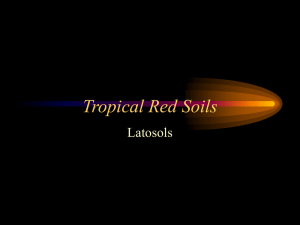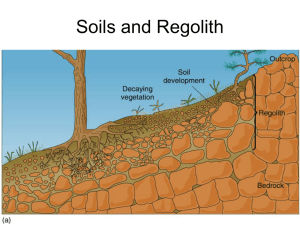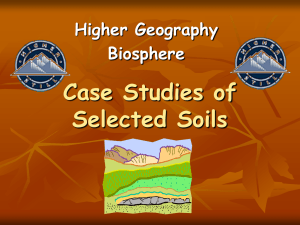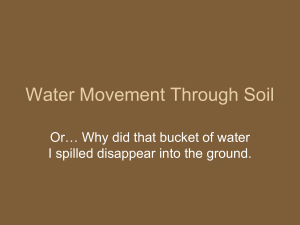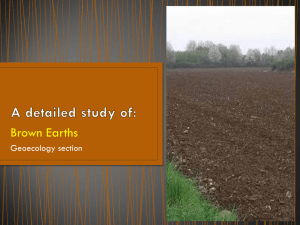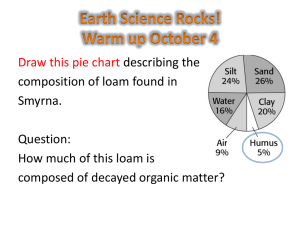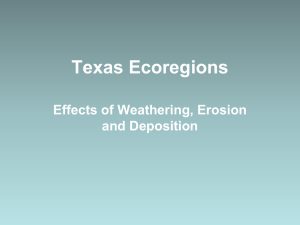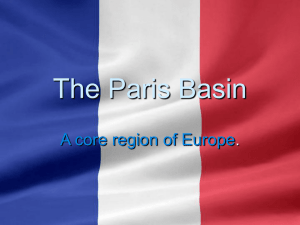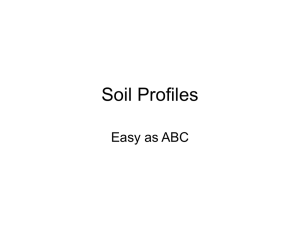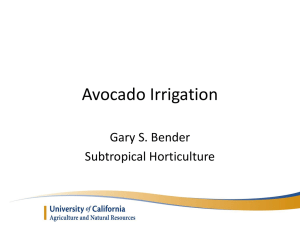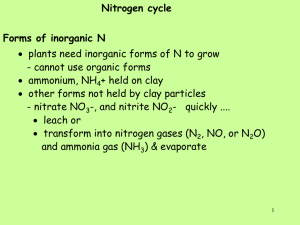Soil Classification: Zonal & Taxonomy Presentation
advertisement
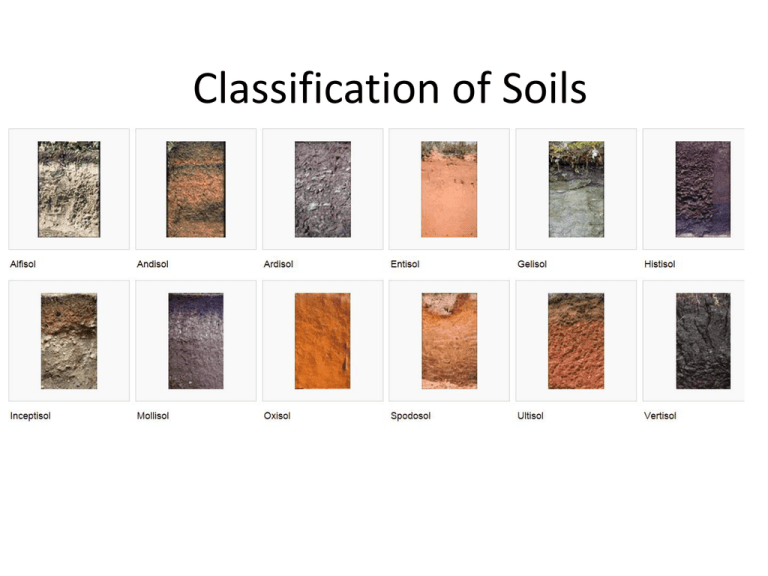
Classification of Soils I. Zonal Classification of Soils A. Russian School V.V. Dokuchaiev—proposed a zonal (climatic) classification: Chernozems, Podzols Noted the powerful relationship among climate, vegetation, and soil type. Strong relationship among climate, parent material, and vegetation Climate Vegetation Soil Type Classification scheme for USA from 1927-1950s Referred to as ‘Zonal Classification’ II. Soil Taxonomy A. History: • Initially modified Russian system, then started to modify to focus more on descriptive rather than genesis. • 1950s……Became evident that the old zonal classification system was inadequate. II. Soil Taxonomy A. History: • Initially modified Russian system, then started to modify to focus more on descriptive rather than genesis. • 1950s……Became evident that the old zonal classification system was inadequate. • USDA Soils Survey Staff began working on a Comprehensive Soil Classification System • Worked through six revisions (approximations) by 1965 • Finally satisfied with the 7th approximation by 1971 II. Soil Taxonomy (Overview) B. Twelve Orders Common Set of Characteristics III. Soil Orders (the specifics) A. Entisol B. Inceptisol C. Alfisol D. Ultisol E. Oxisol F. Mollisol III. Soil Taxonomy (the specifics) G. Aridisol H. Vertisol I. Spodosol J. Histosol K. Andesol L. Gelisol Entisol (ent: recent) • Soils on floodplains, dunes • Little-to-no horizon development • Inherently fertile • Usually no B horizon present due to frequent disturbances or forming on difficult weathering sites. Inceptisol (ept: L. inceptum, beginning) • Upland soil, natural erosion at a normal rate • Weak horizon development • Thin B horizon • Common on steep slopes, especially on • shales Alfisols (from Al and Fe concentrations) • Medium-to-high in natural fertility • Heart of the corn belt, fertile soil • Strong Bt Horizon (silicate clays) • High Base Saturation (<35%) • Usually moist, but dry in late summer • Generally over the Edinburg, New Market, Lincolnshire Limestones • Not as well developed as Ultisols (which are more leached and acid) Old “Grey-Brown Podzols” designation Alfisols Ultisols Ultisol (L. Ultimus, last) Acid, leached soils of warm, humid climates • B horizon enriched with clays and oxides • Clays are responsive to fertilization • Typically forested if left undisturbed • Sometimes has E horizon from leaching Ultisols Oxisol (F. oxide,) • Highly weathered, relatively • Infertile soils dominated by Oxide, low-activity clays • Tropical in nature • Old “Laterite” soil name • Hi concentrations of Fe and Al oxides in soil Oxisol Mollisol (L. Mollis, soft) • Base-rich soils that have a thick, dark A horizon, often formed under grasslands or savanna/steppe. • Intermediate arid-to-humid climate • Black, fertile, and high in organics • Lacks moisture at certain times of the year • Can grow winter and spring small grains • Old terminology: Chernozems, Chestnut, Prairie Soils Mollisol Aridisol (L. aridus, dry) Soils of dry climates with some development in the B horizon, often as precipitates of calcium and other salts. Low organics, but high fertility Never moist for more than 3 months per year. Found in cold and hot deserts of USA Old ‘Pedocals’ / Desert Soils designation Caliche Fun!!! Saline/alkaline Aridisols Vertisol (L. verto, turn, mix) • Dark soils of semi-arid grasslands and savannas which develop deep cracks in the dry season; cracks swell shut in the wet season as the shrink-swell clays rehydrate and expand. • Also common over mafic igneous rocks in humid regions, or soils containing high concentrations of Montmorillonite • High in clay!! • Lack of horizonation Are the dark colors due to high organics?? Vertisol Spodosol(Gr. Spodos, wood ash) • Soils in which translocation of compounds Fe, humus, and Al is dominant. • Tends to dominate in sandy terrains • Most extensive in sub-arctic, but also found throughout New England • High degree of leaching (clay). • Ash-grey A horizon • Low temperatures, but also found in locales such as Florida. • Low in natural fertility Spodosols Histosol (Gr. histos, tisssue) • Organic soils without shallow permafrost, dominated by decomposing organic matter; most are saturated with water at times. Plants, plants, plants….bogs, swamps. Histosols Gelisol (L. gelare, to freeze) • Soils with permafrost within 1 m of the surface. • They have no B horizon; the A horizon rests on top of Permafrost. • Highly leached, low nutrients • Severe restriction on construction, engineering, etc. Gelisols Andisols (modified from ando) • Soils that have often formed in parent material with a large component of volcanic ash. • Split out of Inceptisols due to weak H orizon development • Most common in Pacific Northwest • Very high in Phosphorus Andisols Soil Catena Philmont Scout Ranch Cantina at Ponil Camp Philmont Scout Ranch Cantina at Ponil Camp “Are you sure that’s Root beer you’re drinking?” IV. Soil Taxonomy Hierarchy Order Suborder Great Group Subgroup Family Series IV. Soil Taxonomy Hierarchy (Frederick Series) Order (Ultisols) Suborder (Udults) Great Group (Paleudults) Subgroup (Typic Paleudults) Family (Clayey, Kaolinitic, Mesic) Series (Frederick) Clayey = > 35% clay Kaolinitic = clay > 50% Kaolinite Mesic Temperature = 47 -59 degrees F Clayey, Kaolinitic, Mesic, Typic, Paleudults
